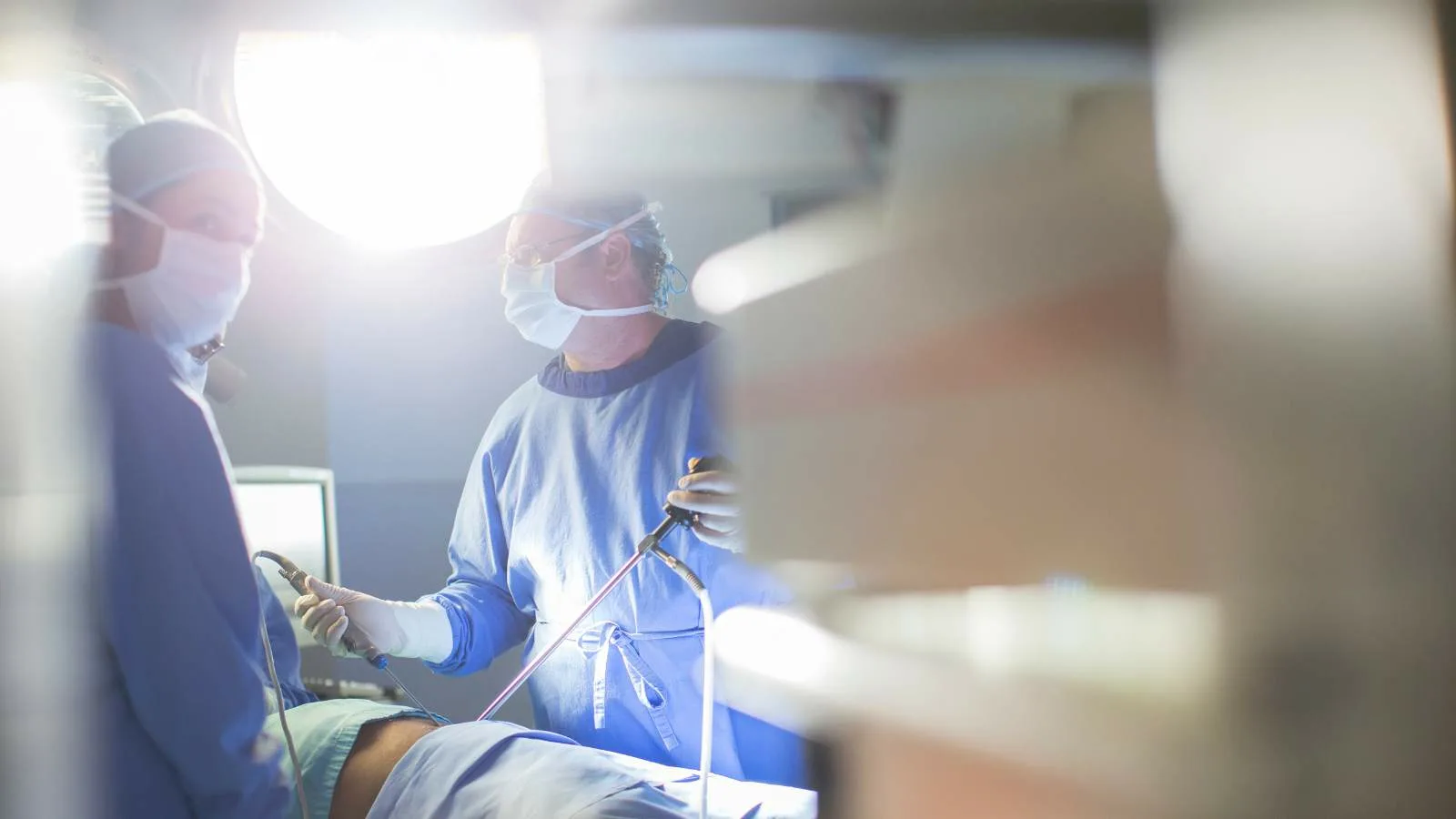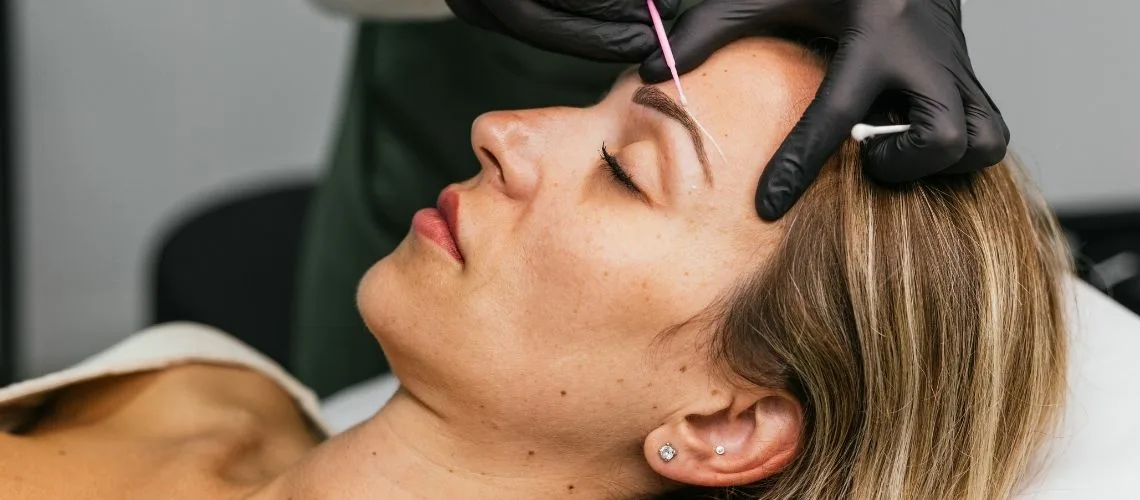Plastic surgery after extreme weight loss addresses excess skin and tissue laxity. Procedures such as body lift, abdominoplasty, and arm or thigh lift help restore contour and improve mobility.
Benefits of post-weight-loss surgery include enhanced body proportions, reduced skin irritation, and improved hygiene. Patients also experience psychological gains from achieving a slimmer, more natural silhouette.
Comprehensive surgical planning is crucial. Surgeons evaluate skin elasticity, nutritional status, and healing ability to ensure safe procedures and long-lasting results after massive weight reduction.
Recovery after body contouring is gradual. Multiple staged procedures may be needed, and long-term outcomes depend on maintaining stable weight, healthy diet, and consistent physical activity.
Why Is There a Need for Aesthetic Surgery After Massive Weight Loss?
Many people who have lost a large amount of weight find that their body does not take on the desired shape, even when their Body Mass Index (BMI) has moved from previously high values into the normal range. The primary reason is that the skin and body tissues have become elastic over time. The skin is normally kept tight by elastic and collagen fibers, but during prolonged obesity, the skin stretches extensively to accommodate the larger volume. If we compare a person to a large, elastic balloon, once a lot of “air” (i.e., fat tissue) is removed, that balloon deflates but still displays noticeable wrinkles, creases, and sagging.
Although the weight loss process is exciting, this “balloon effect” can make achieving the ideal appearance more challenging, because the loss of elasticity in the skin makes it difficult to recover on its own. This results in excess skin. Sagging can appear in many areas, such as the abdomen, arms, legs, back, breasts, and even the face. Through surgical intervention, it becomes possible to remove or reshape this excess skin, reducing aesthetic concerns while increasing personal hygiene and comfort of movement.
Additionally, those who lose weight quickly may experience a sudden reduction in fat tissue that weakens the skin and the tissue between the skin and muscles. For instance, someone who has been obese for a long time might also have stretched and separated abdominal muscles. In such a case, merely removing the excess skin may not be sufficient; restoring and supporting the muscles might also be necessary. Cosmetic surgery procedures can thus improve one’s appearance as well as boost self-confidence and emotional well-being, speeding up the adjustment to a new lifestyle.
Which Areas Experience the Most Problems?
Although almost every part of the body can show deformities after massive weight loss, the most commonly affected regions are as follows:
- Abdomen (Stomach): Patients usually first complain about the excess skin in the abdominal region. Medically, this is referred to as “pannus” or “panniculus.” Excess skin folds around the lower abdomen and may hang over the groin area, causing both aesthetic and hygiene issues. Because the skin can fold over itself, it is prone to irritation or fungal infections due to sweating and friction.
- Arms (Upper Arm/Brachial Region): Commonly called “bat wings,” these sags become noticeable when a person lifts or waves their arms. The excess skin can create aesthetic concerns in daily life and can influence choices toward long-sleeve clothing.
- Legs (Thighs and Inner Thighs): Especially in the inner thighs, loose skin can lead to friction when walking, as well as aesthetic complaints. The skin becomes floppy and is difficult to tighten with just exercise and diet.
- Chest Region: After significant weight loss, sagging and loss of volume in the breasts occur frequently in both men and women. In women, this “breast ptosis” is often more noticeable, while in men, surgeries may involve treating gynecomastia or lifting excess skin.
- Face and Neck: Rapid weight loss can reduce the fat pads in the face, leading to hollow cheeks, prominent under-eye areas, and sagging under the chin. Sometimes referred to in media as “Ozempic face,” this can give a person an older appearance.
- Hips and Buttocks: After losing a large amount of weight, the buttocks can become smaller and lose shape. Sagging in this region can create aesthetic difficulties when sitting, standing, or choosing clothes.
The shared problem in all these areas is sagging skin and sometimes weakened underlying tissues. Surgical interventions can reposition and remove this loose tissue to reshape the body’s silhouette.
Which Surgeries Address These Changes?
In modern aesthetic surgery, the wide range of procedures available can correct sagging and deformities that occur in various parts of the body after massive weight loss. The most common operations include:
- Abdominoplasty (Tummy Tuck): This procedure removes excess skin and fat in the abdominal area, often tightening the abdominal muscles at the same time. The goal is both a flatter abdomen and support around the waist. Variations such as mini and full abdominoplasty exist, chosen based on the degree of sagging.
- Brachioplasty (Arm Lift): To address loose upper-arm skin, incisions are usually hidden along the inside of the arm or in the armpit. If necessary, liposuction is performed to remove excess fat deposits in the same session.
- Thighplasty (Thigh Lift): A thigh lift can address extra skin in the inner or outer thigh region. Incisions are generally planned to lie in the groin crease or on the inner thigh.
- Mastopexy (Breast Lift) and Implants if Needed: In women, breast sagging resulting from weight loss may require a breast lift. If volume is also lost, a breast implant can restore fullness. In men, chest procedures focus more on gynecomastia surgery and tightening excess chest skin.
- Lower Body Lift: This addresses the abdomen, waist, buttocks, and upper parts of the thighs in one procedure, effectively tightening the entire lower torso. It is especially indicated after massive weight loss, where multiple areas in the lower body region show sagging.
- Face and Neck Lift (Facelift – Necklift): If the loss of facial volume has resulted in lines and sagging cheeks or neck, a facelift procedure may be considered. Some patients also require fat injections or dermal fillers to restore volume to sunken areas.
- Liposuction: While it does not correct skin sagging by itself, it aids shaping by removing localized fat deposits. If necessary, it can be combined with surgeries that remove excess skin.
Each surgical technique is personalized to meet the patient’s needs and expectations. Details such as incision placement, operation duration, type of anesthesia, and the recovery period vary depending on the scope of the procedure.
Are There Non-Surgical Solutions?
Many people say: “I don’t want surgery, but I want to get rid of this sagging.” For those who see surgery as a last resort, there are alternatives to consider. Nevertheless, one must be clear: when the skin is highly stretched and the sagging severe, surgery remains the most effective method. Non-invasive treatments may help some people with mild sagging and relatively good skin quality:
- Radiofrequency (RF) and Ultrasound: These energy-based methods stimulate collagen and elastin production in the deeper skin layers, aiming for visible tightening. However, results are often limited for severe sagging.
- Laser Treatments: Similar principle: certain laser wavelengths promote collagen stimulation. Helpful for mild skin laxity.
- Microneedling and Filler Procedures: Used mostly for light sagging and wrinkles on the face. Microneedling creates tiny channels that trigger tissue renewal, while fillers restore volume to sunken areas. However, neither addresses large amounts of excess skin fully.
- Increasing Muscle Mass: Exercise and muscle-building can partially improve the appearance of sagging arms or buttocks, as enhanced muscles provide some tension to the skin. But it does not remove the actual excess skin.
Generally, non-surgical methods are effective for mild to moderate skin laxity. With more pronounced sagging, it is very challenging to achieve satisfactory results. Consequently, consulting a specialist to evaluate the extent of intervention needed is crucial.
When Is the Right Time for Surgery?
The timing of surgery is one of the most important factors determining its success for individuals who have undergone extreme weight loss. Patients who have rapidly lost weight through diet or bariatric surgery (e.g., gastric sleeve, gastric bypass) will eventually reach a point of stabilization. Stabilizing weight and eating habits is essential for surgical planning.
It is generally advised that weight remains stable—without major fluctuations—for at least 3-6 months. Among those who have had bariatric surgery, this period often corresponds to about 1.5-2 years after the procedure. If a patient is still losing or regaining weight, the long-term outcomes of the operation are at risk. For instance, if someone loses an additional 10-20 pounds after surgery, new skin sagging may develop.
During this time, the patient’s overall health is also expected to improve. Individuals who lose weight rapidly may experience protein, vitamin, and mineral deficiencies—particularly in iron, vitamins B12 and D, and calcium—factors that can hamper wound healing and immune function. Failure to address such deficiencies can heighten postoperative complication risk.
Hence, “The earlier I have surgery, the better” is not always correct. Giving the body enough time to recover, adopt a stable nutrition regimen, and mentally prepare for surgery leads to better long-term results.
What Preparations Should Be Made Before Surgery?
- Examination and Evaluation: A thorough consultation with a specialist is mandatory before making a surgical decision. During this exam, factors such as skin quality, degree of sagging, any chronic illnesses, medication use, and so forth are considered. The patient’s expectations are discussed, and the surgical techniques are explained.
- Blood Tests and Health Screenings: Typically, a complete blood count, biochemical tests, coagulation studies, electrocardiogram (EKG), and if necessary, a chest X-ray are performed to verify the patient’s suitability for surgery. Vitamin and mineral levels may also be evaluated.
- Nutrition and Exercise: A balanced diet and light exercise prior to surgery help the body respond better to the procedure. Preserving muscle mass and consuming enough protein accelerate postoperative recovery.
- Smoking and Alcohol Restriction: Smokers tend to heal more slowly and face higher complication risks. Thus, patients are advised to quit smoking at least 2-4 weeks before the operation and to remain smoke-free during recovery. Alcohol consumption should also be limited before surgery.
- Psychological Preparation: Major weight loss followed by body contouring surgery can be emotionally demanding. Patients may need to adapt to a new appearance, along with pain, bruising, and swelling in the initial days. Setting realistic expectations and seeking psychological support if necessary are important steps.
How Does Recovery After Surgery Progress?
Although the surgery itself takes just one day, the healing can extend over weeks or sometimes months. During this time, the patient’s patience and diligence significantly influence the quality and permanence of the outcome.
Early Days and Hospital Stay: Depending on the scope of the procedure, patients may remain in the hospital for 1-3 days. For larger interventions such as a lower body lift, the doctor may want to keep the patient under observation for a few days. At this stage, pain management and care for any drains (if present) are critical.
Pain and Swelling (Edema): Pain, swelling, and bruising around the operated area in the initial weeks are normal—tissues responding to incisions and manipulation. The doctor’s recommended medications and cold compresses help control these symptoms.
Compression Garments: After many body contouring operations, wearing special corsets or compression garments is necessary. These garments support the surgical site, assist tissues in adhering properly, and help reduce edema. Adhering to the recommended wear schedule speeds recovery.
Balancing Activity and Rest: Remaining bedridden for a long period impairs blood circulation and can lead to muscle weakness. Gentle movement such as walking promotes circulation and lowers the risk of thrombosis (blood clots). Patients should, however, wait at least 4-6 weeks before engaging in strenuous exercise and always consult their doctor first.
Stitch Care and Wound Healing: Sutures require careful care. Keeping the incision clean and changing dressings on schedule greatly reduce the risk of infection. Some surgeries use dissolvable stitches, while in others, stitches are removed later. Initially, scar lines may appear red and prominent, but they usually lighten over time.
Long-Term Results: It often takes 3-6 months to fully appreciate the outcome. Edema subsides, tissues stabilize, and the skin adjusts. Collagen production and tissue remodeling continue for up to a year, during which the scars can keep maturing. Maintaining a stable weight is crucial for preserving the results.
What Are the Risks and Key Considerations of These Surgeries?
Like any surgical procedure, aesthetic operations following massive weight loss carry certain risks. To minimize them, preoperative medical evaluations, selecting appropriate candidates, and careful surgical technique are essential. Nonetheless, here are some important considerations:
- Infection and Bleeding Risk: Especially in cases where large skin areas are addressed, improper wound care can increase infection. Bleeding risk also rises if the patient has clotting issues or due to medications before or after surgery.
- Tissue Necrosis (Tissue Loss): Blood vessels that nourish the skin may be damaged, causing some tissue areas to lose viability. Smokers are at higher risk for this complication.
- Hematoma and Seroma: Blood (hematoma) or fluid (seroma) can collect in the surgical site, causing pain, swelling, and delayed healing. Draining the fluid may be necessary in such cases.
- Thromboembolism (Blood Clot): Prolonged inactivity increases the risk of clot formation. If a clot travels to the lungs, it becomes life-threatening. Therefore, early mobilization, compression stockings, and possibly blood thinners are employed.
- Scarring: Wide incisions will unavoidably result in visible scars, which often fade over time but never disappear completely. Surgeons try to place incisions in hidden or less noticeable areas where possible.
Additionally, the patient’s psychological readiness is essential. Seeing a different-than-expected result in the mirror post-surgery can be stressful. Hence, maintaining open communication with the surgeon and seeking psychological support if necessary is very important.
The Psychological Dimension: Does It Really Boost Self-Confidence?
Someone who has experienced massive weight loss may already have improved their quality of life and “turned a new page.” However, noticing that the mirror still “reminds” them of their old self through sagging skin can create a sense of incompleteness, which may reduce motivation and lead to depression or anxiety.
Cosmetic surgery can ease these emotional burdens. Feeling more comfortable in their body often allows individuals to behave more confidently in social settings, wear clothes more freely, and not avoid places like the beach or gym. Some studies show improvements in depressive symptoms and enhanced social functioning after surgery.
What Lifestyle Measures Help Preserve Postoperative Results?
Maintaining the “new body” after surgery relies heavily on nutrition and exercise habits. If the individual returns to unhealthy eating or a sedentary life, weight gain is likely, leading to further skin looseness. The achieved surgical outcomes can thus be undermined.
Balanced Nutrition: A diet high in protein, vitamins, and minerals, while low in processed foods, excessive fat, and sugar, is recommended. Particularly those who have had bariatric surgery should maintain consistent check-ups to prevent deficiencies and take supplements as needed.
Regular Exercise: Activities such as walking, swimming, light jogging, or Pilates aid in weight control and preserving muscle mass. Stronger muscles contribute to an overall toned appearance, supporting the surgical contour.
Restricting Smoking and Alcohol: Smoking during the pre- and postoperative period negatively affects wound healing and skin quality. Alcohol, due to its caloric load and metabolic impact, should also be limited.
Routine Medical Checkups: Several checkups in the first year, and annually thereafter, help identify any new weight fluctuations or deformities, allowing for timely intervention.
What Changes Occur in the Face, and How Are They Addressed?
While the torso and limbs are the first areas people think of when it comes to weight loss, the face is also significantly affected. Especially “hollow cheeks” or “excess skin under the chin” can make a person appear older or more tired. Sometimes, this is described as “Ozempic face.”
- Facelift and Necklift: If significant skin laxity is present, a standard facelift is indicated. For smaller-scale sagging, a mini-facelift or neck lift might suffice.
- Fat Injections and Fillers: To restore volume to sunken cheeks or under-eye areas, autologous fat injections or synthetic fillers can be used. The patient’s own fat is often favored for a natural result.
- Radiofrequency and Laser Procedures: In mild sagging, these energy-based approaches can improve skin quality and boost collagen production.
Because the face is so visible, meticulous planning is essential. Achieving a natural look is just as crucial as removing sagging.
Multiple Areas in One Surgery: Is It Possible?
Often, individuals who have lost weight experience sagging in more than one area. Some would like to address everything at once, hoping to have just one surgery and one recovery period. Medically, combined operations can be done, but there are pros and cons.
Advantages: Only one anesthesia session for multiple corrections, which may reduce total recovery time and hospital stays. The patient can have a single leave from work or daily activities.
Disadvantages: A lengthier surgery imposes more stress on the body, raising the risk of blood loss, infection, and anesthesia complications. Additionally, the recovery period can be more uncomfortable when multiple areas are healing simultaneously.
Some surgeons prefer to divide large-scale cosmetic corrections into at least two separate sessions. This eases the physical strain on the body and enables complications to be managed more effectively. Because each patient’s condition and goals differ, it is advisable to plan carefully with a qualified professional.
Should Psychological Support Be Obtained During This Process?
Both massive weight loss and subsequent cosmetic procedures can be challenging experiences physically and mentally. The individual first deals with obesity, succeeds in losing weight, and reaches a desired size. Just when one expects relief or a sense of “victory,” the presence of loose skin and a series of potential surgeries can be disheartening.
Self-Image and Body Image: A person who has been overweight for many years may have internalized a certain body shape. Although the physical appearance changes rapidly, the mind can lag behind in adapting. Cosmetic surgery can help bridge this gap. However, before surgery, it may be beneficial to build a strong self-image and set realistic expectations. Psychological assistance can help achieve this.
Postoperative Period: Right after surgery, bruises, swelling, and scars can cause shock. The patient must cope with these changes and be patient. Feeling upset or discouraged is common, but if it becomes severe, consulting a psychologist or psychiatrist can aid in better adjusting to the new reality, preventing depression or anxiety disorders.
Social Support System: The backing of loved ones, family, and friends can be as crucial as professional help. Assistance with daily tasks during the postoperative period and emotional support can make the recovery more manageable.

Op. Dr. Erman Ak who is one of the best cosmetic and plastic surgeon in Turkey, completed his specialization at Istanbul University Çapa Medical Faculty. He received advanced microsurgery training in Taiwan and, as an ISAPS fellow in Italy, training in facial and breast aesthetics. Dr. Ak holds the European Union Aesthetic Plastic Surgery qualification certificate from EBOPRAS and contributed to the establishment of the Plastic Surgery Department at Başakşehir Çam and Sakura Hospital. He currently accepts patients from Turkey and various other countries at his clinic in Nişantaşı.









